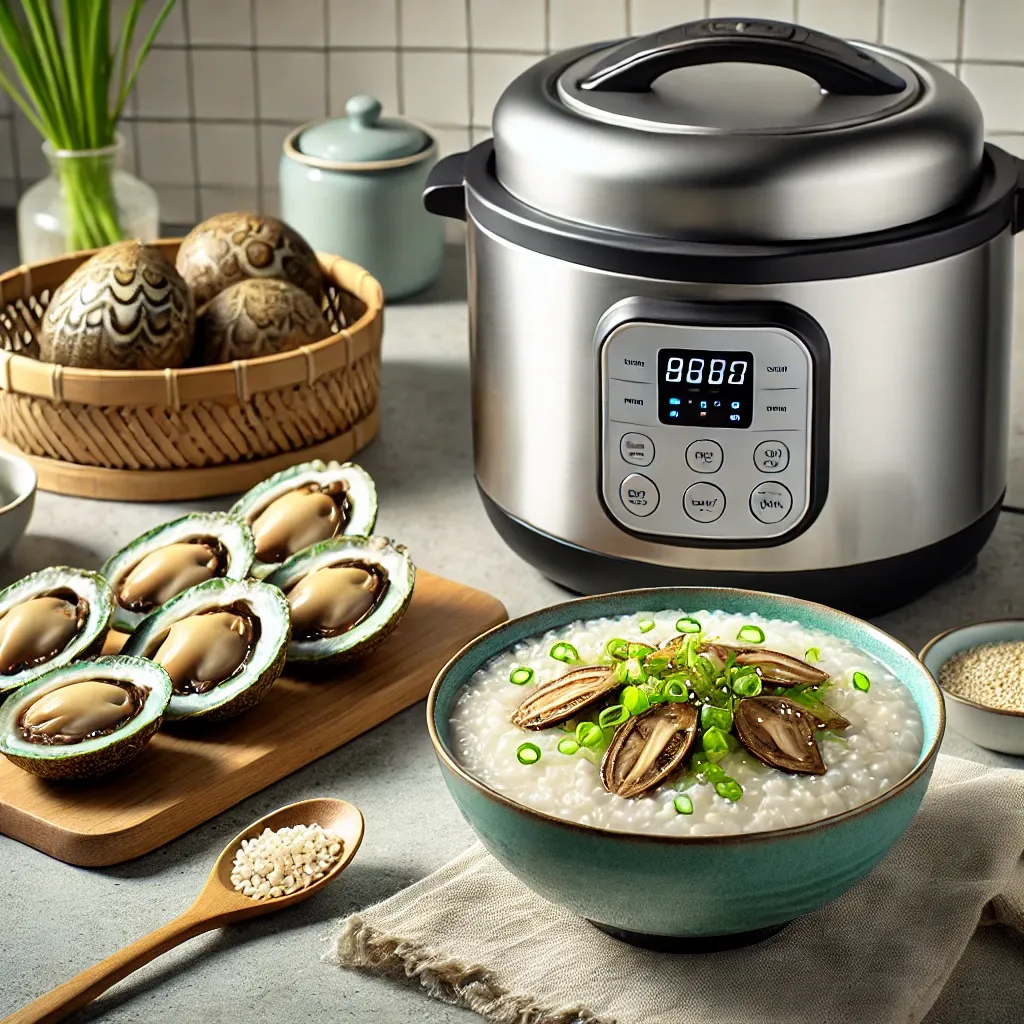Curious about how to elevate your home-cooked meals with luxurious ingredients? Wondering if a pressure cooker can transform abalone into tender, flavorful perfection? This guide walks you through three irresistible ways to cook abalone rice dishes with a pressure rice cooker—don’t miss the expert tips at the end!
Pressure rice cooker abalone porridge
If you’ve ever craved a bowl of warm, comforting porridge with gourmet flair, pressure rice cooker abalone porridge is your answer. Using a pressure rice cooker doesn’t just save time—it also draws out deep flavors from ingredients like abalone, rice, and dried scallops. It’s not only delicious, but also a nutrient-rich choice ideal for recovery meals or weekend comfort food.
Here’s a step-by-step breakdown of how to make it:
-
Soak dried abalone overnight for best texture and flavor.
-
Wash and soak rice (short-grain is best for porridge) for 30 minutes.
-
Add sliced ginger, abalone, rice, and water into the pressure rice cooker.
-
Set the cooker to porridge mode (or pressure cook for 20–25 minutes).
-
After cooking, stir in sesame oil and garnish with chopped scallions or fried shallots.
-
For a richer taste, add a few dried scallops or chicken broth.
-
Optional: add ginseng or jujubes for a medicinal version.
-
Let it rest for 5 minutes to thicken naturally before serving.
I’ve made this many times, especially when recovering from a cold. The soft texture and rich flavor of abalone melt beautifully into the rice, creating a silk-like consistency. My family always requests this during colder months.
If you’re using Korean or Chinese dried abalone, a pre-soak and double-blanching step will help remove strong sea odors while preserving umami. The pressure cooker makes the abalone tender without losing its chewy integrity—a texture balance prized in East Asian cuisine.
For those with little cooking time, using a pressure rice cooker with a built-in porridge function (like Cuckoo or Zojirushi models) simplifies everything. You can even set it on a timer the night before!
👉”Best Recipes for Abalone Porridge”👈
Abalone pot rice pressure cooker
Unlike porridge, abalone pot rice is a fragrant, one-pot dish with a firmer bite. Think of it as the elevated cousin of bibimbap or Chinese claypot rice, but with the tender decadence of abalone. A pressure rice cooker offers the dual benefit of perfect rice texture and thoroughly cooked abalone in much less time than traditional pot rice.
Here’s how you can make abalone pot rice with a pressure cooker:
-
Marinate fresh or canned abalone in soy sauce, sesame oil, and a pinch of sugar for 10–15 minutes.
-
Rinse and soak rice for 30 minutes to prevent sticking.
-
In the cooker, add rice, water, and a mix of shiitake mushrooms and sliced abalone.
-
Use the “mixed rice” or “pressure cook” mode depending on your model.
-
After cooking, let it sit for 10 minutes to develop a crispy bottom layer (optional).
-
Top with scallions, oyster sauce drizzle, and fried garlic for extra aroma.
-
If you prefer, add Chinese sausage, chestnuts, or lotus root for variety.
One time I hosted a dinner party, and I served abalone pot rice cooked in a pressure rice cooker. Guests were stunned not just by the taste, but also by how each bite of rice had absorbed the umami of abalone and mushroom. It was a showstopper—and nobody guessed it came out of a rice cooker!
Abalone pot rice is more than a recipe—it’s an experience. The balance of flavors, the contrast of textures, and the richness of every ingredient make it ideal for festive occasions or a romantic dinner at home.
To get the coveted crispy bottom (known as socarrat or nooroongji), some high-end rice cookers offer a “scorch” function. If yours doesn’t, try letting the rice rest for a few extra minutes in the residual heat.
👉”Learn More About Pot Rice Cooking”👈
Abalone rice pressure cooker
The third standout is a simpler, everyday dish: abalone rice cooked in a pressure cooker. Less soupy than porridge and more straightforward than pot rice, this recipe focuses on flavorful, fluffy rice infused with the essence of abalone.
This dish is perfect for beginner cooks or anyone looking for a hearty meal that feels luxurious without the fuss.
Here’s a simplified version that delivers great results:
-
Clean and slice abalone into thin pieces.
-
Prepare your rice and soak as usual.
-
In the cooker, combine rice, sliced abalone, soy sauce, mirin, and water.
-
Use the standard white rice or pressure cook function.
-
After cooking, add a knob of butter or truffle oil for richness.
-
Garnish with shiso leaf, sesame seeds, or even ikura for extra flavor and color.
I’ve made this dish on weeknights when I want something nutritious but quick. It’s especially great for bento boxes the next day. The abalone’s briny taste gently infuses the rice, creating a gourmet effect without requiring advanced techniques.
From a nutrition standpoint, this dish offers protein, minerals like zinc and selenium, and low-fat goodness, all in one bowl. If you’re health-conscious, consider using brown rice or a multigrain blend—it works beautifully in pressure cookers.
And let’s not forget versatility. You can swap out abalone with scallops, clams, or even vegan mushrooms while keeping the same method. It’s truly a foundational dish that you can tweak endlessly.
👉”Explore More Abalone Rice Ideas”👈
Whether you’re aiming for silky porridge, hearty pot rice, or elegant steamed abalone rice, the pressure rice cooker is your secret culinary weapon. It shortens cooking time while enhancing texture and flavor, especially for prized ingredients like abalone. Try one of these recipes today and turn your ordinary meal into a gourmet feast.
“One cannot think well, love well, sleep well, if one has not dined well.” – Virginia Woolf
Let your pressure cooker do the work, and let abalone elevate your meals to something truly unforgettable.






